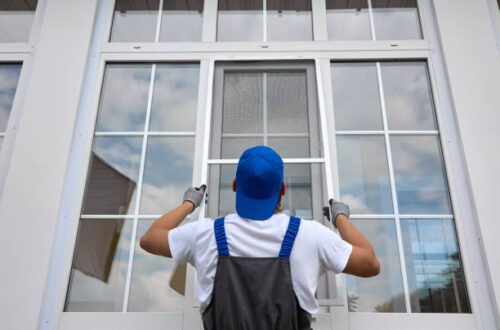Do you sometimes feel ill or restless for unexplainable causes? Your home humidity levels could be the key.
Read through this article and discover how house humidity can affect you. Understand and use these principles to your advantage.
What is House Relative Humidity?
Relative humidity is the ratio of water vapor present in the air to the most amount of water that the air can hold at a given home temperature level. It is a percentage that ranges from 0% to 100%.
The higher the relative humidity, the more moisture there will be in the air. This means that it will feel warmer.
What is the Ideal House Humidity?
The ASHRAE set a standard for the comfort level of house humidity between 30% and 50%. This range is most healthy for most people.
Humidity levels should not exceed 50% due to the risk of bacteria growth. Anything below 30% is too dry, and anything over 60% is too humid.
How to Measure Indoor Humidity?
A hygrometer measures the surrounding climate and indoor humidity levels.
Psychrometers measure the difference in temperature between dry and humid air. Wet-bulb thermometers measure the dew point of the air by comparing it to a dry-bulb thermometer.
The wet-bulb and dry-bulb temperatures are plotted on the Psychrometric Chart to show the relative humidity.
What Causes High House Humidity?
People experience dry skin and sore throats or noses at low humidity levels.
At high humidity levels, people experience problems with mold growth and respiratory problems like asthma attacks. Causes may include:
- dirty or malfunctioning humidifier filter
- air-tightly sealed home
- prevailing climate or season
- inadequate ventilation
- damp basement, walls, and ceilings
- mold and mildew in the house
- fireplaces and cooking areas
You can consult professional companies like patriotpros.com for accurate assessment.
How to Lower House Humidity Levels?
High house humidity can be troublesome. Here are some tips on how you can lower your home’s humidity level:
Use Humidifier and Dehumidifier Properly
If you have an evaporative cooler or air conditioner running in your home, use a humidifier to combat dry heat and keep indoor air hydrated.
Humidifiers are machines that increase air moisture levels by adding water vapor to the air. This causes the mass of vapors to condense into liquid water droplets. Humidifiers can also raise the air temperature of the air. This increases the capacity of air for moisture retention.
Dehumidifiers are machines that decrease the level of moisture in the air. They then release it as water vapor into the atmosphere outside your home.
Keep Windows and Doors Closed
Open air passages, like doors and windows, allow moisture from outside into your home. This inflow can increase your indoor humidity levels by a significant amount.
It is preferable to open windows that face the yard. Close your kitchen and bathroom doors regularly to stop moisture from coming out.
Keep bedroom doors also closed to avoid fumes and humid air from entering.
Ventilate Properly
Cooking or using appliances that produce fumes raises the house’s humidity levels. Among such are gas stoves or wood-burning fireplaces. Be sure to keep the door to the room open or use ventilators.
Proper air changes allow healthy levels of humidity and improve indoor air quality.
Maintain a Healthy Level of House Humidity
Maintaining an ideal humidity level in your house is crucial for the household. Let these principles about house humidity give you the ability to manage them.
For more helpful topics, see our latest content.






